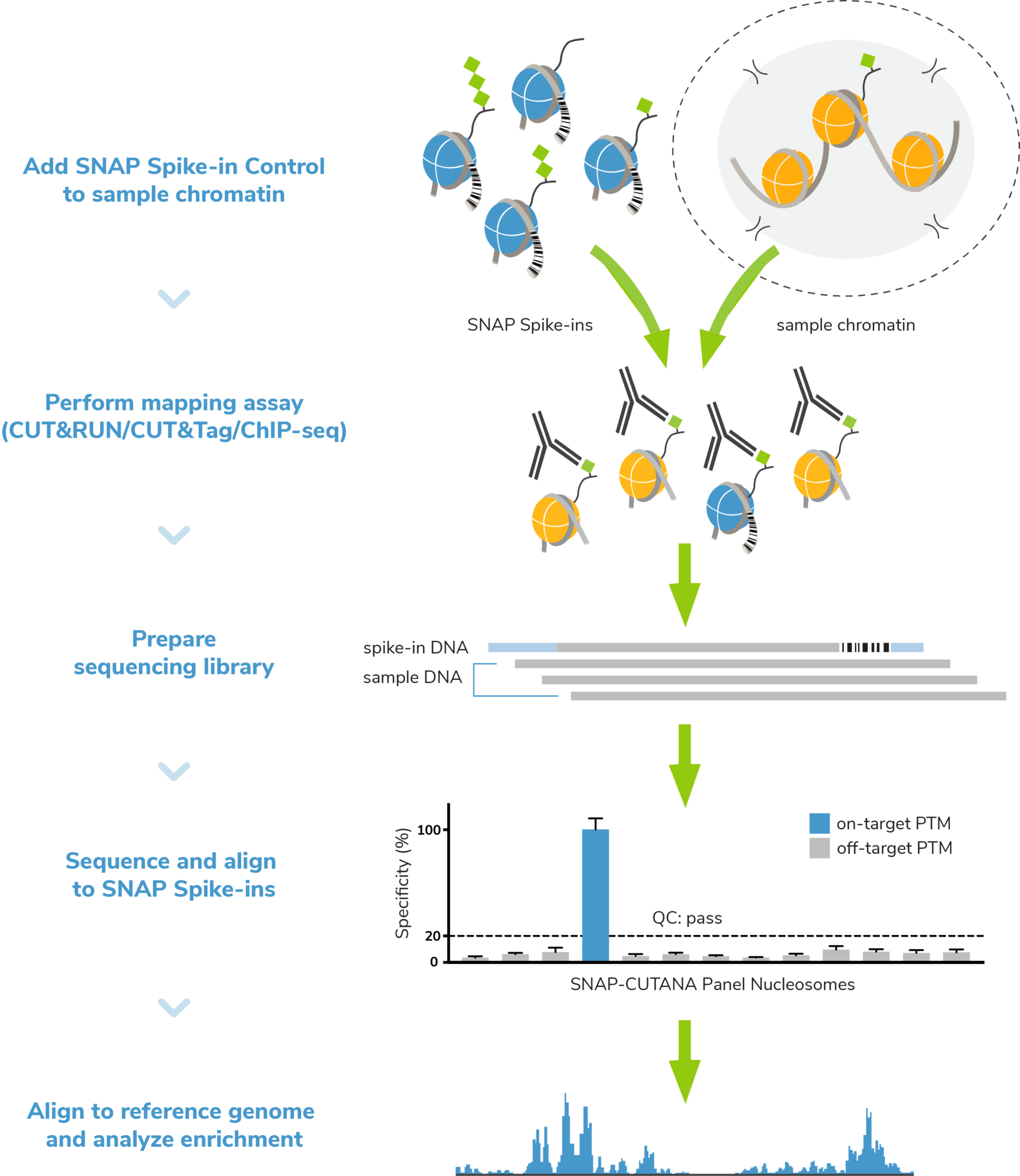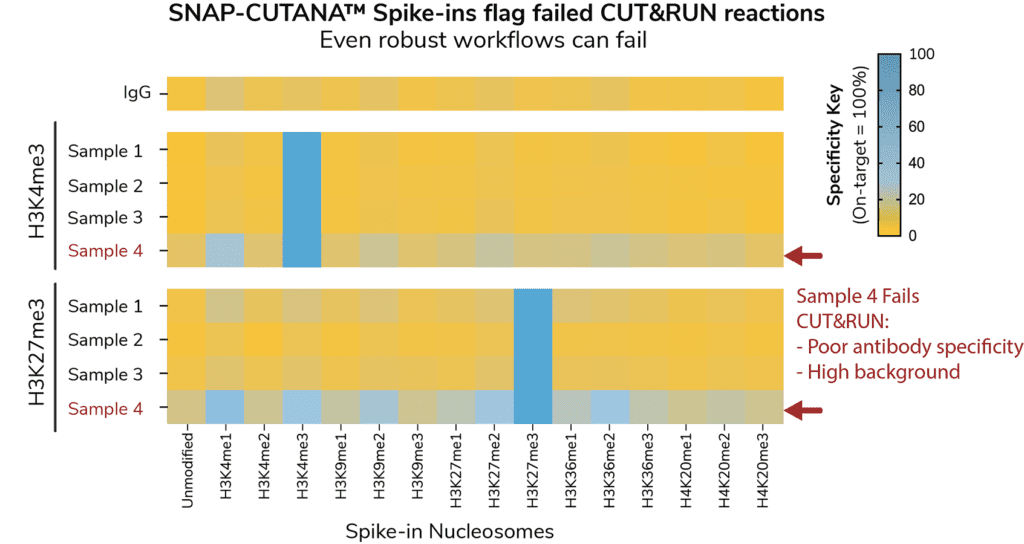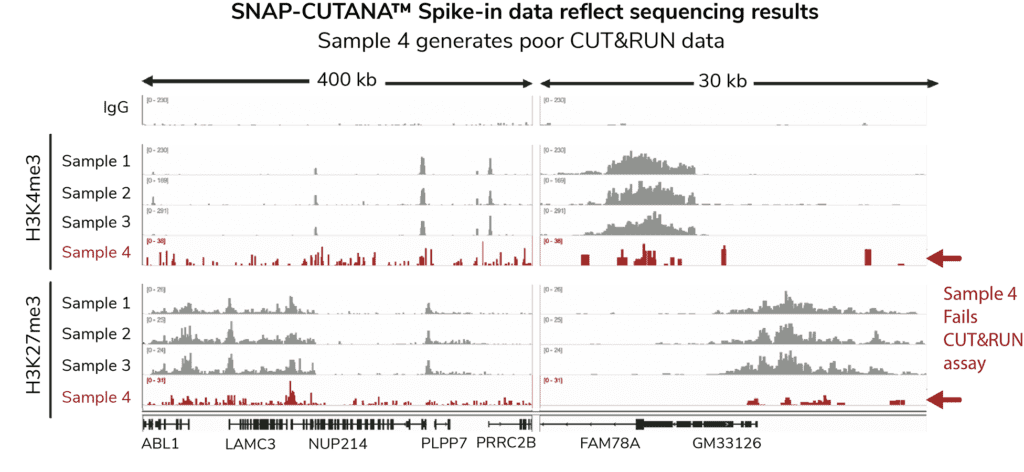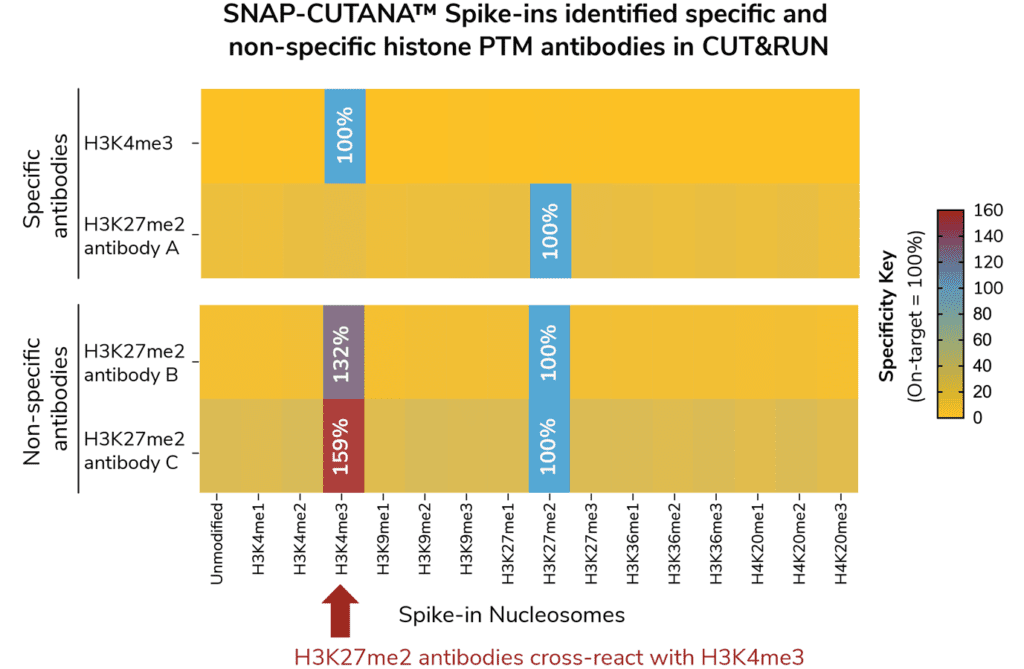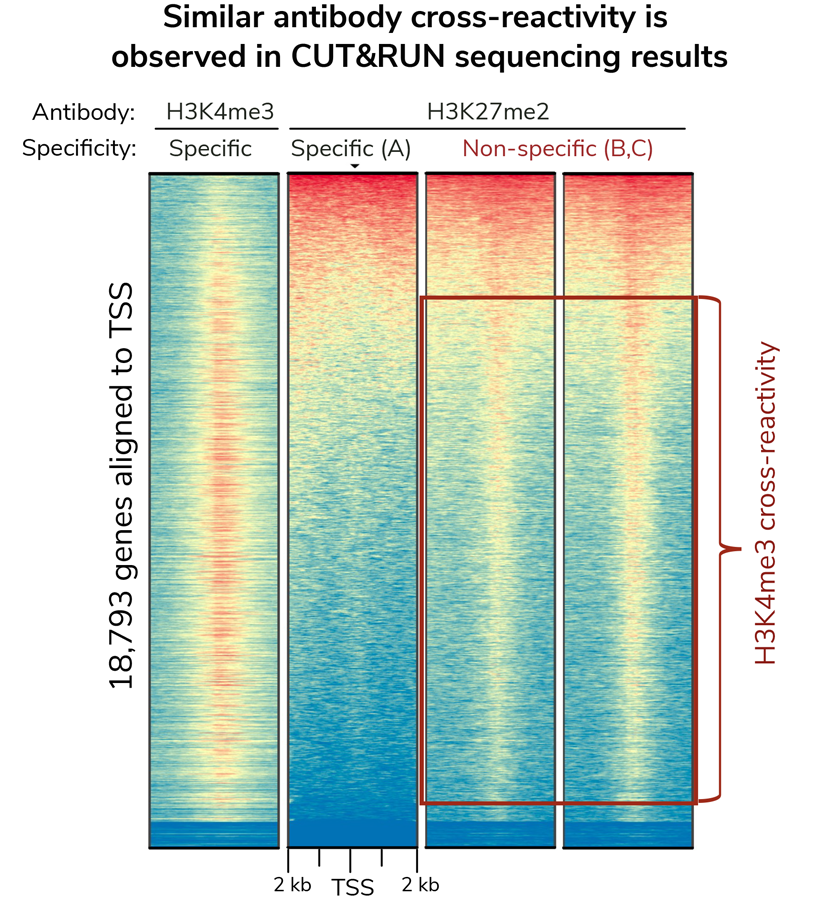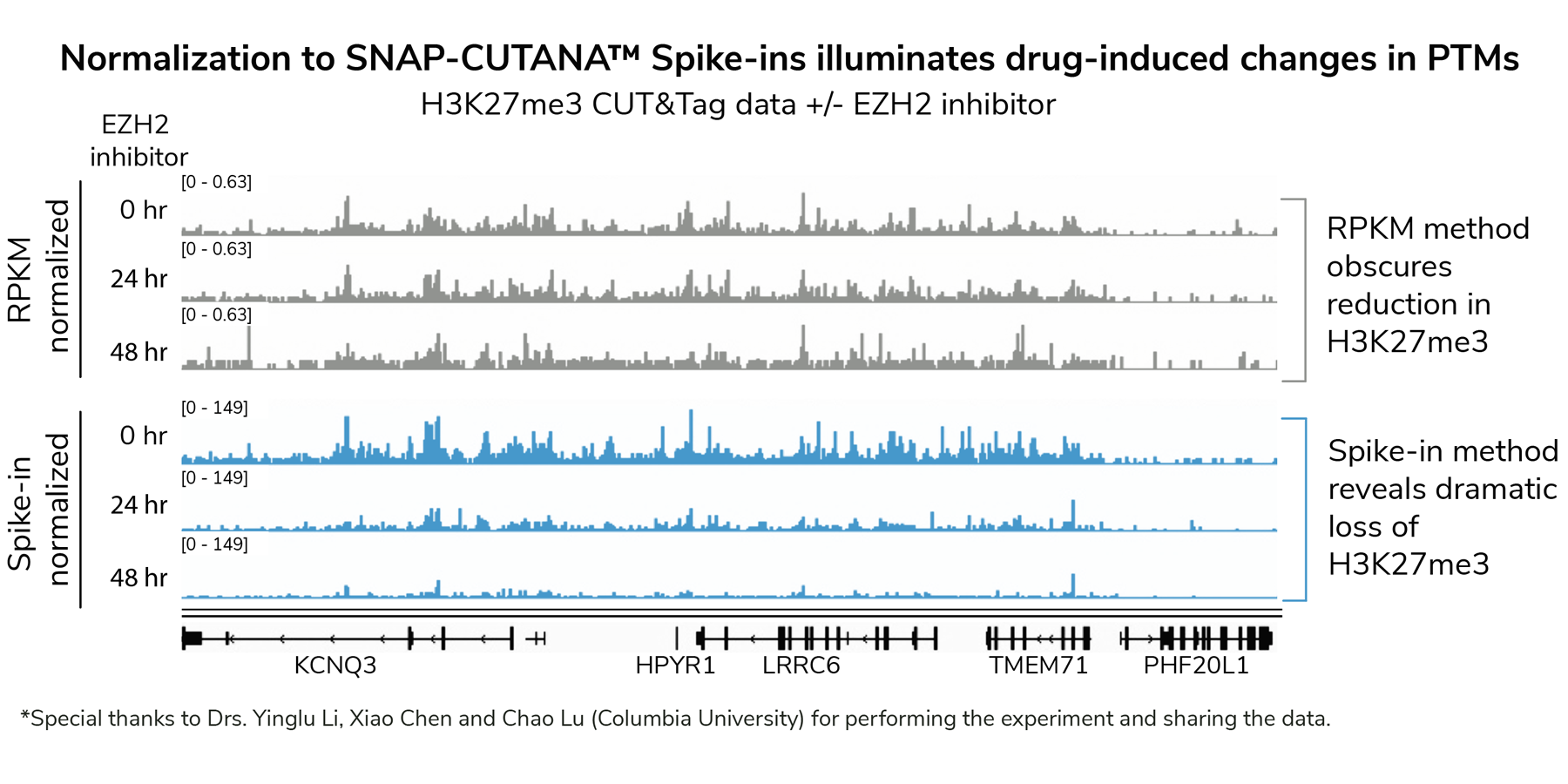All-in-one solution for quantitative chromatin profiling
Epigenomic mapping of histone post-translational modifications (PTMs) is a powerful and widely used approach for studying chromatin regulation. However, current controls are ill-defined and unable to provide accurate readouts of assay success, antibody specificity, or be used for quantitative normalization. The true quality of epigenomics data is often obscured, which misleads scientists and wastes valuable resources. EpiCypher has created SNAP Spike-in Controls to address these problems. With one easy step, you can control your assay and be confident in your data:
- Direct, quantitative readout of experimental success
- In-assay validation of antibody specificity
- Robust normalization for cross-sample comparisons
- Compatible with CUT&RUN, CUT&Tag and ChIP-seq assays

